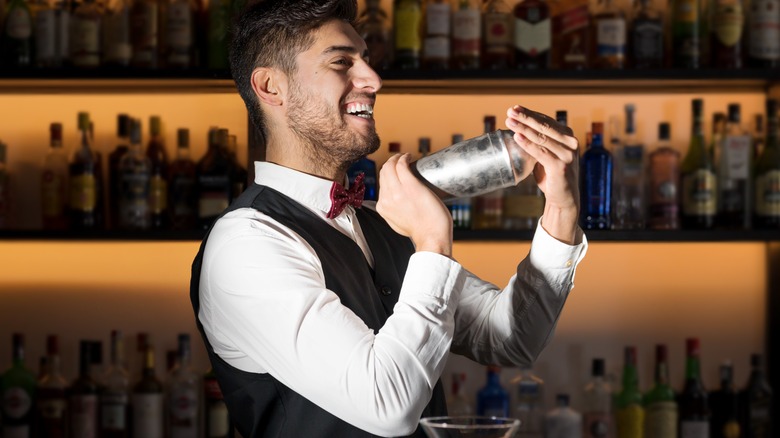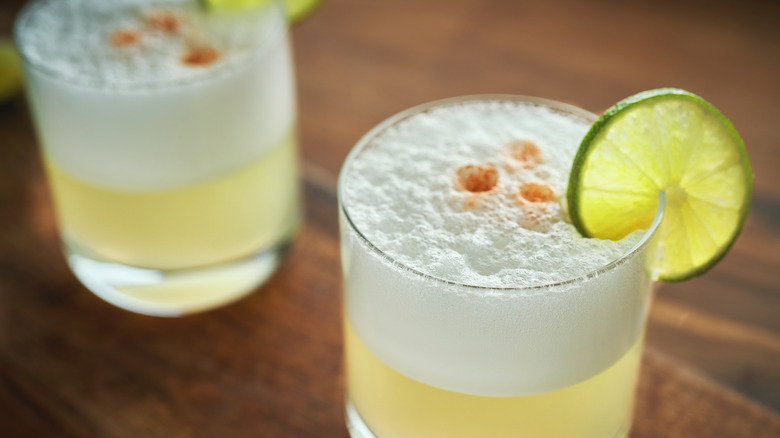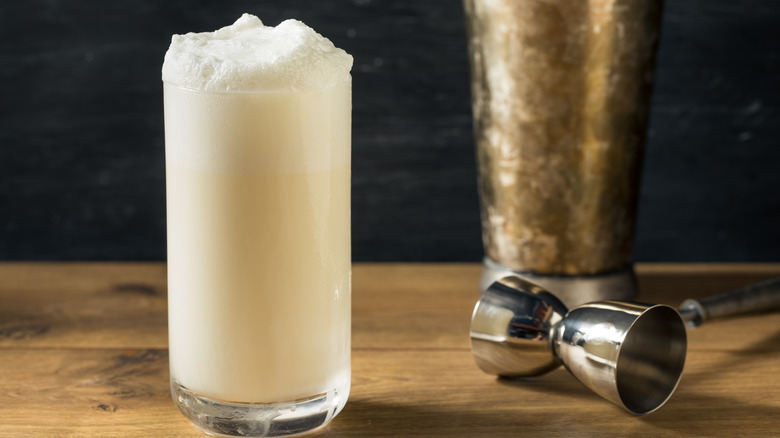Use A Whip Shake For The Frothiest Cocktails Of Your Life
The whip shake, like many cocktail shaking methods — the hard shake, double shake, and dry shake technique, among others — is aimed at achieving a specific result: namely, cocktails with a certain consistency or texture.
For example, the goal of whip shakes is to create deliciously frothy cocktails without the dilution associated with other shaking techniques. How is this accomplished? By using little ice. The whip shake is performed very quickly in a short back-and-forth motion until the ice is completely melted, and the drink has achieved its desired texture. Despite the minimal ice (only a cube or two, or the equivalent in crushed or other forms of ice), the drink still becomes properly chilled. But because there's more room in the shaker for air, which takes up the space normally allotted to more ice, the drink comes out much frothier.
The whip shake was invented (or reinvented) around 2006, so it's not quite as well-known as some of the more traditional techniques. However, because of its obvious sustainability benefits (less ice used) and the high-quality results (less dilution, more froth), it's increasingly becoming more popular with certain types of cocktails.
Why aeration is the key to all cocktail shakes
Why are some cocktails shaken, and others stirred? For the fictional spy James Bond, the answer seems to be personal preference. For bartenders, however, the choice typically hinges on the ingredients used. After all, both shaking and stirring can accomplish chilling and a proper blending of ingredients.
Shaking is specifically used as a method to aerate drinks and give them specific textures or consistencies. But only a few ingredients — namely, egg white, cream, and citrus — are suited to achieving these effects. Therefore, any drink containing these ingredients should ideally be shaken. That's the traditional wisdom. The various shakes, it should be noted, are also intended to elevate the drink's flavors. The whip shake, for example, enhances flavor intensity by reducing dilution, while also aerating for a signature frothiness.
In the past, some used the so-called dirty dump technique — simply pouring everything quickly from the shaker to the glass without straining — to give cocktails a little extra froth. However, a whip shake followed by a quick strain provides more froth and wastes far less ice. Hence, its growing popularity as a shaking technique.
Which cocktails are better with a whip shake?
Perhaps no cocktail is more famously labor-intensive than the Ramos gin fizz, which includes all the ingredient categories that are conducive to froth: egg white, heavy cream, and citrus. However, many traditional recipes over the years have called for as much as 15 minutes of shaking to achieve this effect. The whip shake effectively solved this cocktail dilemma by reducing the shaking time to about two minutes. It also properly emulsifies the ingredients, a task previously accomplished by bartenders mainly through the dry shake (without ice).
But the Ramos gin fizz isn't the only cocktail improved by the whip shake. The technique works well with any egg white-based drink, as well as cocktails made with pineapple and crushed ice. No, pineapple is not a citrus fruit. However, it is rich in enzymes like bromelain, which make it easy to foam, froth, or otherwise aerate. This is particularly true for Tiki-style drinks, and cocktails like the pisco sour.



